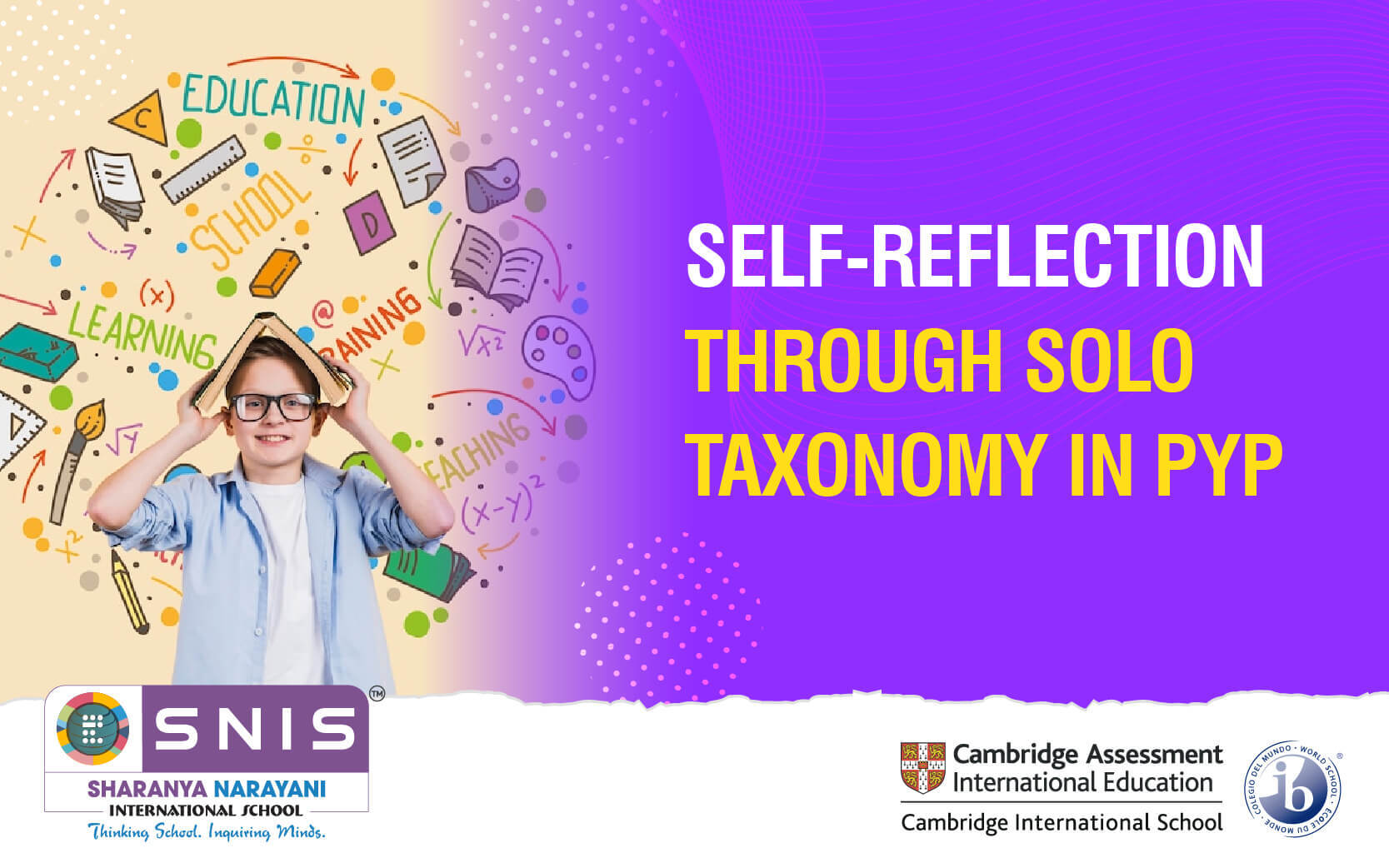
10 Oct Self-reflection through solo taxonomy in PYP
It is said “knowing yourself is the beginning of all wisdom”. An imperative goal of assessment is to receive feedback for going forward in learning. Just getting feedback from teachers is not enough. It is only when students are active in creating success criteria and engaged in the process of self-evaluation and reflection against those criteria, that they are able to use feedback for improvement.
SOLO taxonomy stands for Structure of the Observed Learning Outcomes. It offers a structure for learners to build their learning and thinking. Through self-reflection, students keep evaluating where they are in their present level of understanding and what they must do to progress to the next level.
There are 5 levels of understanding in SOLO Taxonomy:
| Prestructural – Learning shows unconnected information (No idea) | Unistructural – Learning shows simple connections (one idea) | Multistructural – Learning shows connections are made (Many ideas) | Relational – Learning shows connections are made and parts are synthesized with overall meaning (Related ideas) | Extended Ideas – Learning goes beyond the subject and links are made to other concepts |
|---|---|---|---|---|
 |  |  |  |  |
(Acquired from Biggs, 2011)
Even the youngest learners from kindergarten can self-assess their learning through the hand gestures represented in the SOLO taxonomy.
SNIS, being one of the top international schools in Bangalore, students learn to self-reflect from kindergarten through Grade 5 from the learning engagements to the assessments taken. The success criteria here in this IB school in Bangalore are co-created with the students so that they know what success looks like and what they should do to achieve the maximum expectation. It is including students in the process of defining success. Rather than the teacher defining what constitutes good work, it is having the student define what they think is good work by making them part of the process from the learning engagement to the assessment. This unique entity paves way for student agency, which is an integral part of learning in PYP in our school, and that helps us to be one of the best international schools in Bangalore. Student agency is about the learners having an active role in their learning through voice, and often a choice in the process. Students use solo taxonomy to frequently self-assess their learning using “I can statement.” The statements are written by students in child-friendly language.
These “I can statements” help students understand
- Where they are in their learning?
- Where do they need to go?
- What do they need to do to bridge the gap between where they are right now and where they need to go?
When written well, “I can statements” also help students understand
- What the lesson is about?
- Why is it important?
- What do they need to do in order to showcase what they have learned?
These “I can statements” can be written by students across different disciplines like UOI (Unit of Inquiry), Math, Language, Art, PE, Music and Dance to self-assess their learning to pave a way for their future learning. Through this process, the students take ownership of their learning, which is also one of the key elements of the student agency in top IB Schools like SNIS.
By Ms. Raji Vidyashankar, Associate PYP Coordinator, SNIS



Sorry, the comment form is closed at this time.